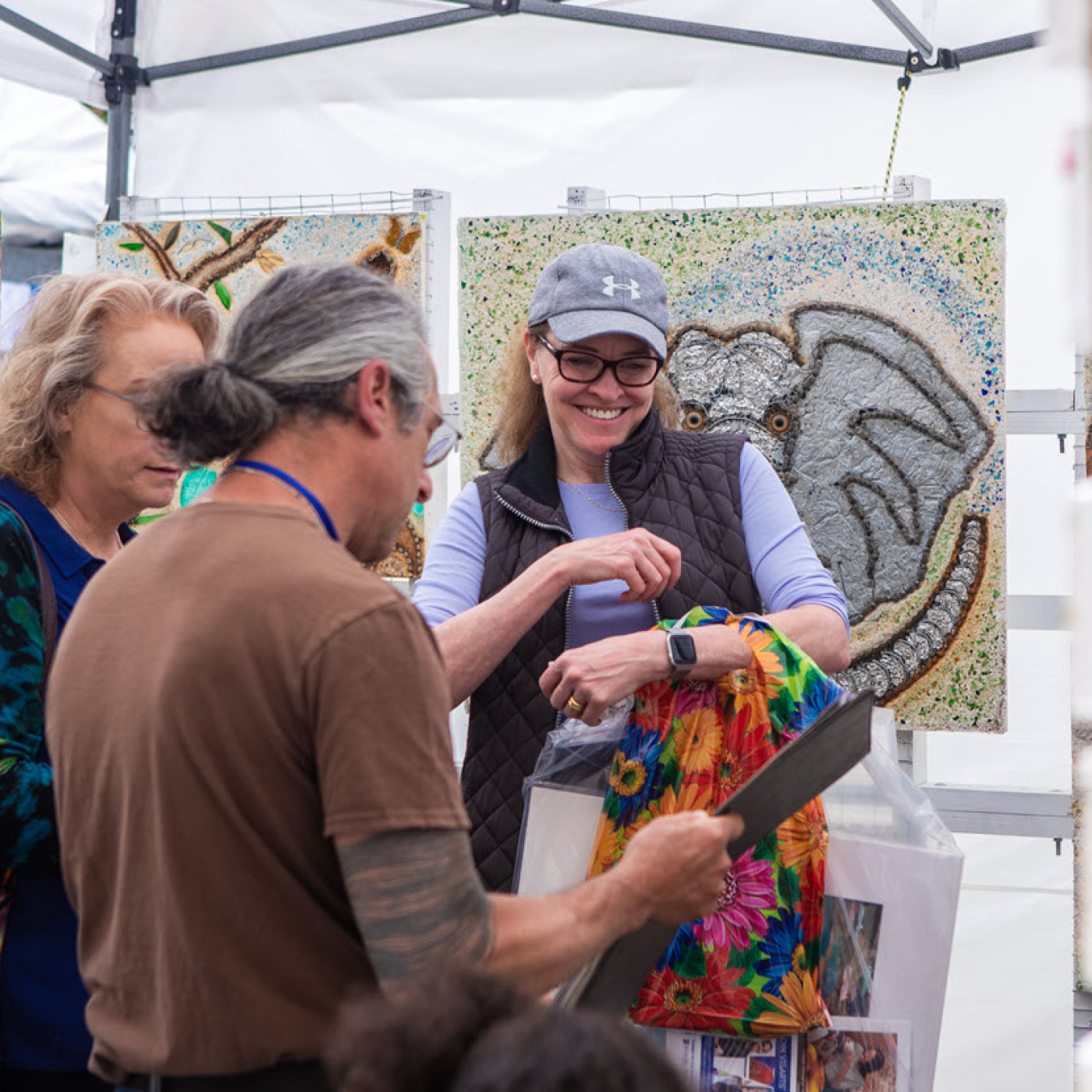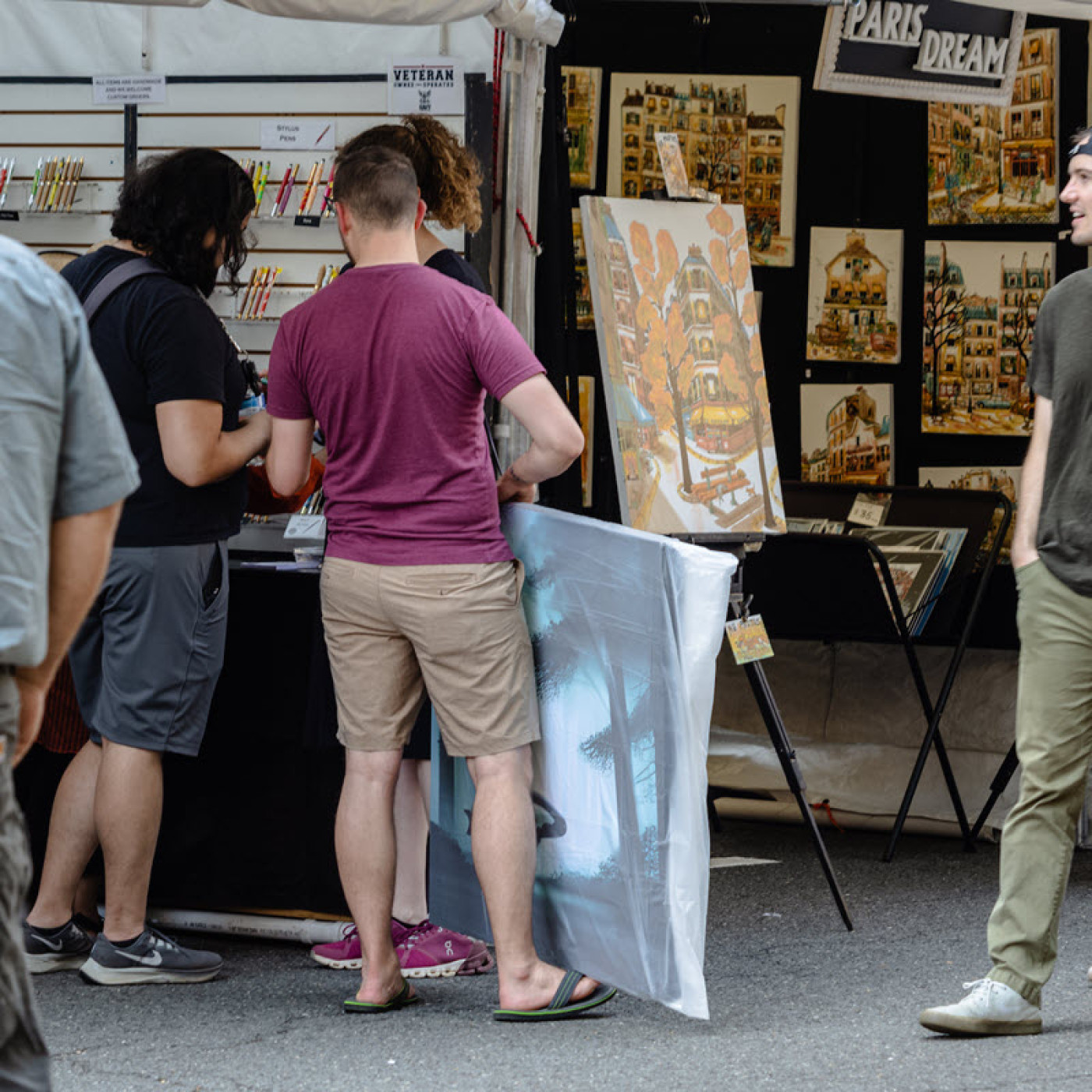Master the Art of Festival Sales Promoter Shares Tips and Advice
In the world of fine art festivals, your booth is more than just a space — it is your brand, your studio, and your first impression all rolled into one. Whether you are a seasoned professional or a first-time exhibitor, how you present, engage, and follow up can make the difference between a quiet weekend and your best show yet. Here’s how to turn foot traffic into collectors with professionalism, purpose, and a touch of savvy.

Set the Stage: Attract Visitors to Your Booth
A strong show starts with a strong setup. Your booth should feel like a gallery, not a garage sale. Keep your space clean, cohesive, and welcoming. Use vertical display strategies to lift your work to eye level and avoid layouts that make your space feel closed off.
Think about color and flow. Cohesive color palettes and logical groupings help visitors quickly understand what your work is about. Include a focal piece to draw eyes from afar — just like a shop’s window display.
Position yourself where you are visible, ideally near the front or to the side. Do not hide behind a table; it creates a physical and psychological barrier. Stand (do not sit) and greet patrons with a warm smile and an open invitation to explore.
The atmosphere should be relaxed but professional. Remember, your energy sets the tone. According to retail psychology, people are more likely to enter and engage in environments that feel approachable and calm. A positive booth vibe keeps visitors lingering — and shopping.
The Art of Engagement: Turn Browsers Into Buyers
Once they are in, how you interact matters. People connect with stories. Share yours. What inspired the piece? How was it made? Why does it matter to you?
Storytelling builds emotional connection — and people buy based on emotion, then justify with logic. Let your passion lead the conversation, but do not dominate it.
If someone is studying a particular piece, walk over and say, “That one always gets a reaction. I created it after a trip to the coast — are you drawn to the color, the texture?” Engage without overwhelming.
Offer to help try on jewelry, walk a customer through a wall of prints, or point out subtle details they might miss. Demonstrating your process — whether with samples, videos, or sketches — builds credibility and keeps attention.
Be mindful of your body language. Facing the customer, maintaining open posture, and making eye contact signals that you are ready and present. These small signals make a significant difference in closing a sale.

Price Point Strategy: Art for Every Collector
A variety of price points not only welcomes more patrons, but it also builds trust and invites new collectors. Entry-level pieces are perfect for first-time buyers and impulse purchases. These also serve as souvenirs that remind people of you — sparking future purchases.
Offer options for every budget. Having smaller prints, handmade cards, or mini originals makes your work accessible. Sets and combinations encourage bundling and raise your average sale.
Price psychology is real: when patrons see a $900 painting next to a $75 print, the print feels like a deal. Tiered pricing allows you to anchor your value while still capturing sales.
Do not be afraid to highlight bestsellers or use small signs like “Perfect for first-time collectors” or “Add to your gallery wall.” These kinds of nudges guide unsure shoppers.
Follow Up When They Are Not Quite Ready
Sometimes, they love your work, but they are just not ready to buy. Do not let them walk away empty-handed. Offer a business card, postcard, or brochure with the specific piece they like.
QR codes linking to your website or online store make it easy to reconnect. Capture emails via a guestbook or tablet. Mention your ability to create custom work — this opens the door for collaboration.
This is where psychology comes in: people need to see or interact with a product multiple times before committing. Following up puts you back on their radar.
After the show, send a brief email thanking them for visiting and inviting them to view your work online. Add a note referencing the piece they admired.
Personalization matters. This is not just a transaction — it is a relationship. When you follow up with professionalism and heart, you plant seeds that often bloom later.
Final Frame
Great shows are not about luck. They are about preparation, presentation, and personality. When your booth reflects your professionalism and your passion, you do more than make sales — you make an impression. And that is what brings people back, year after year.
See you on the circuit!
